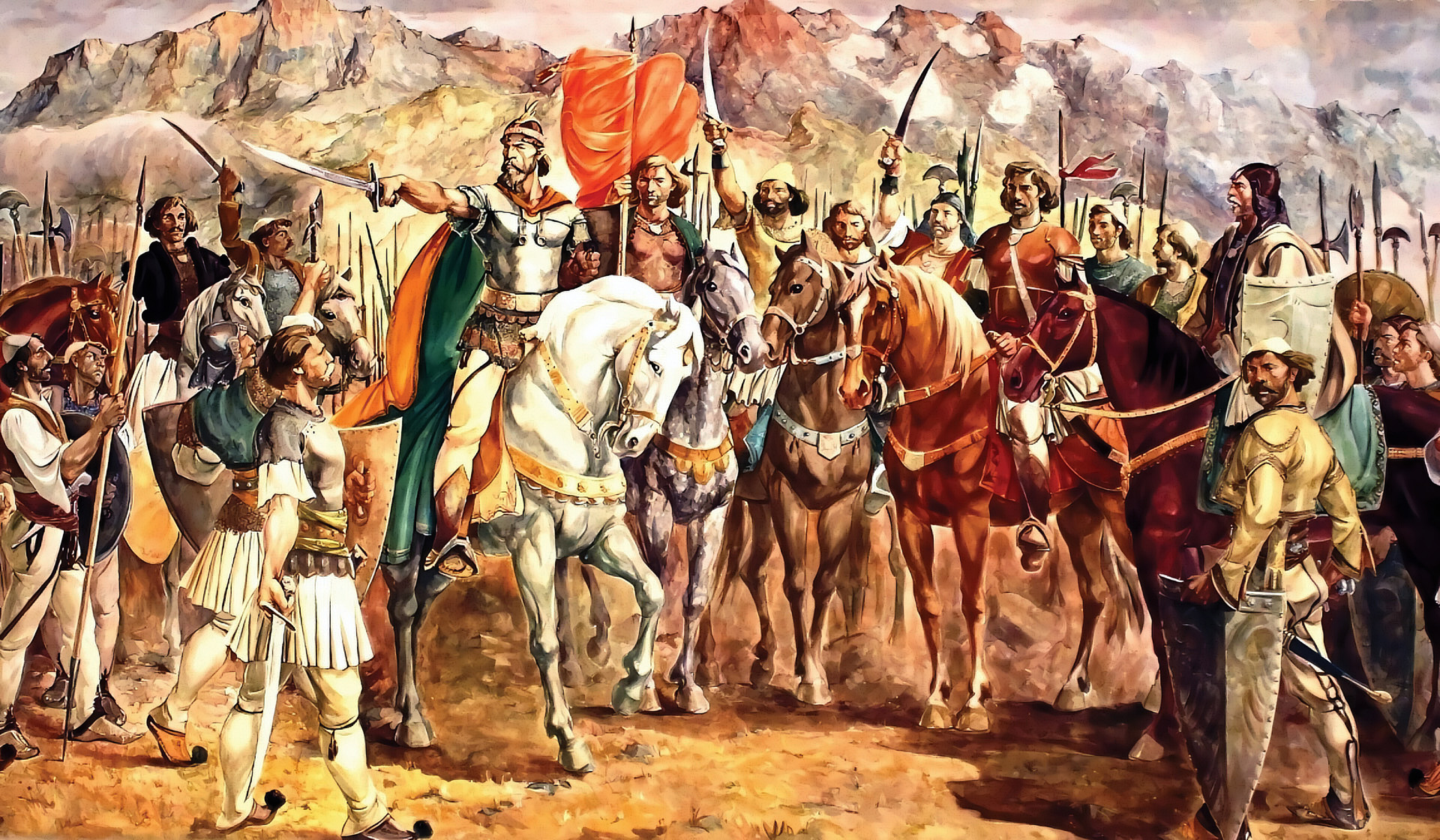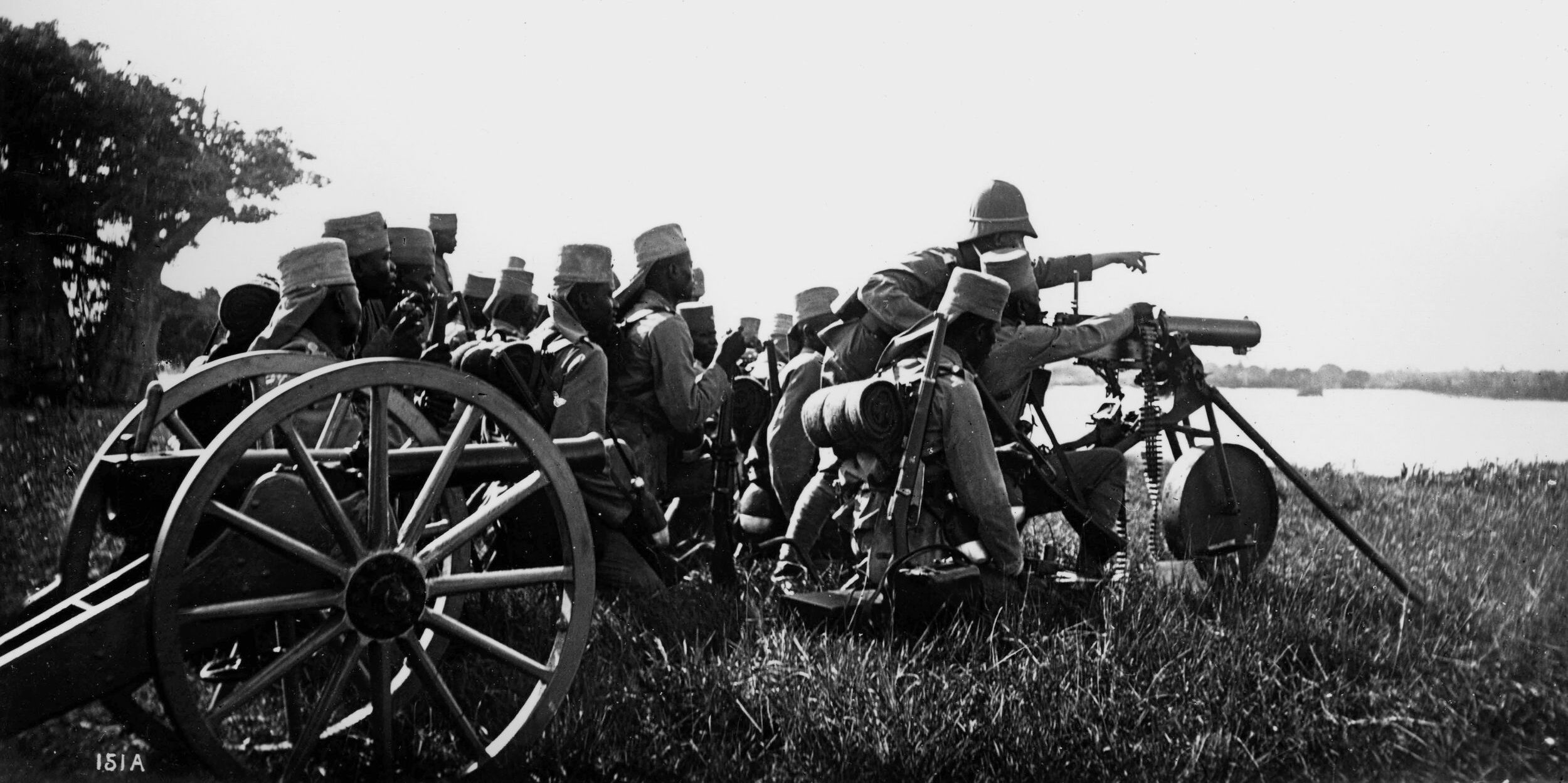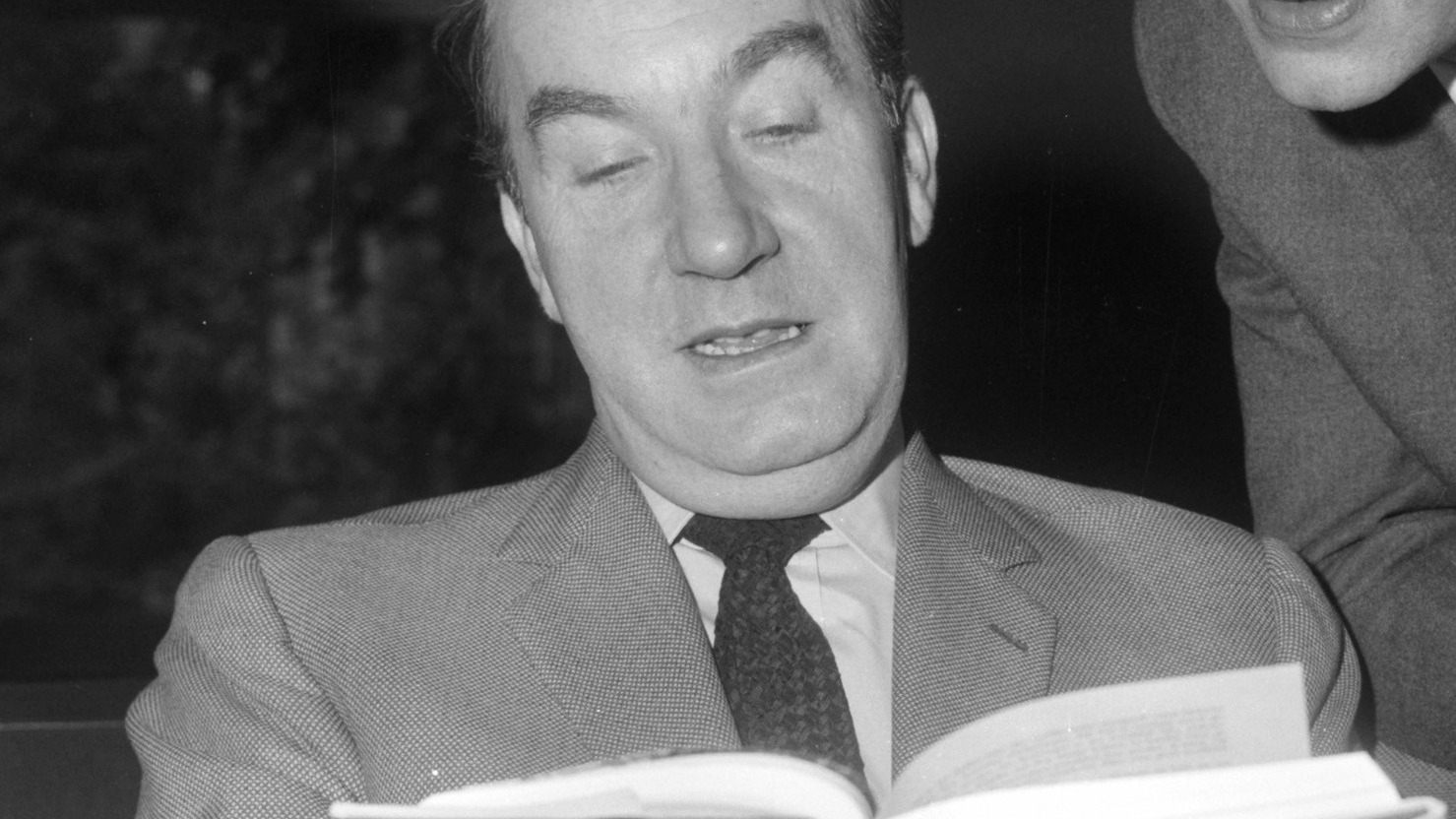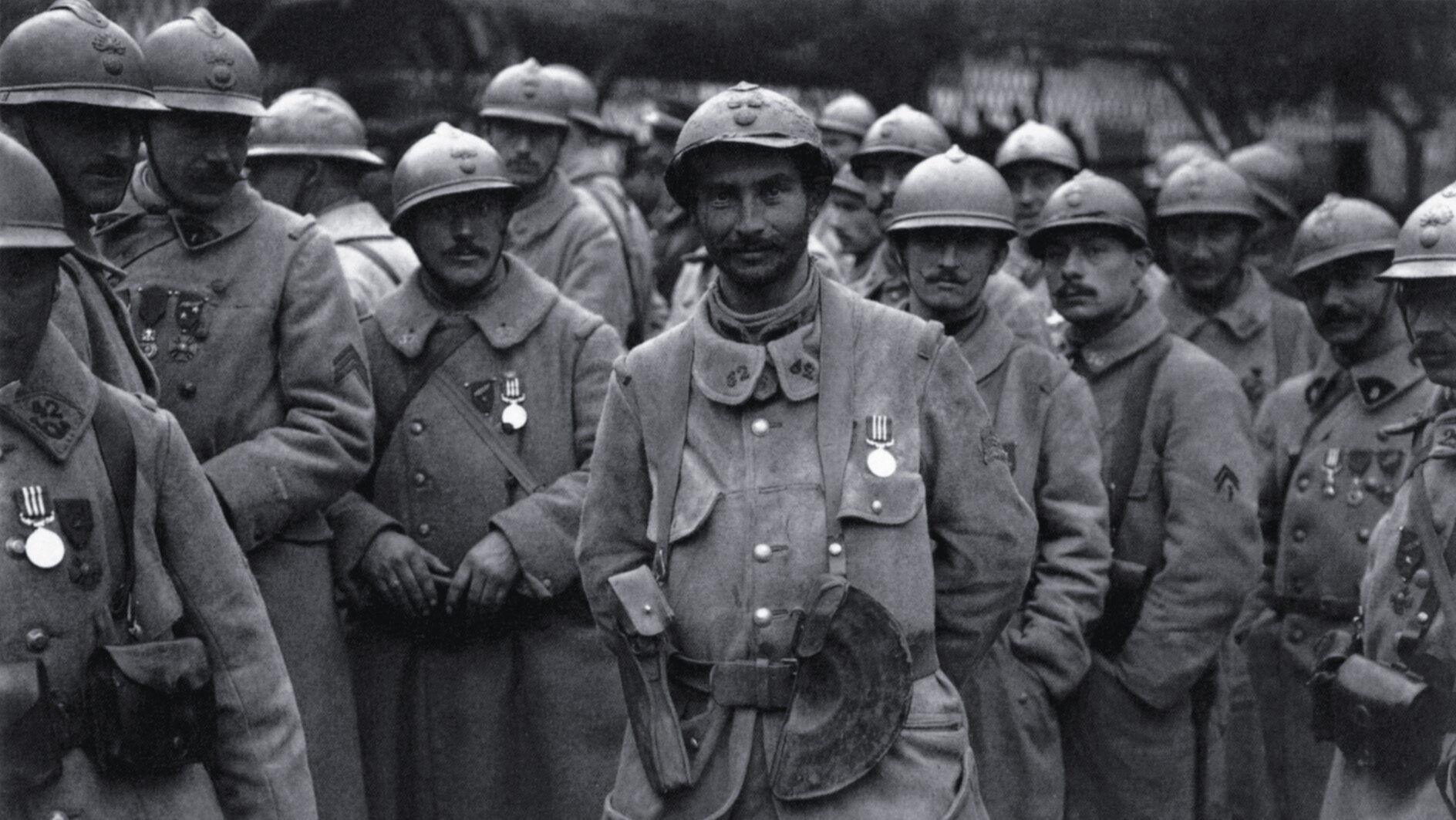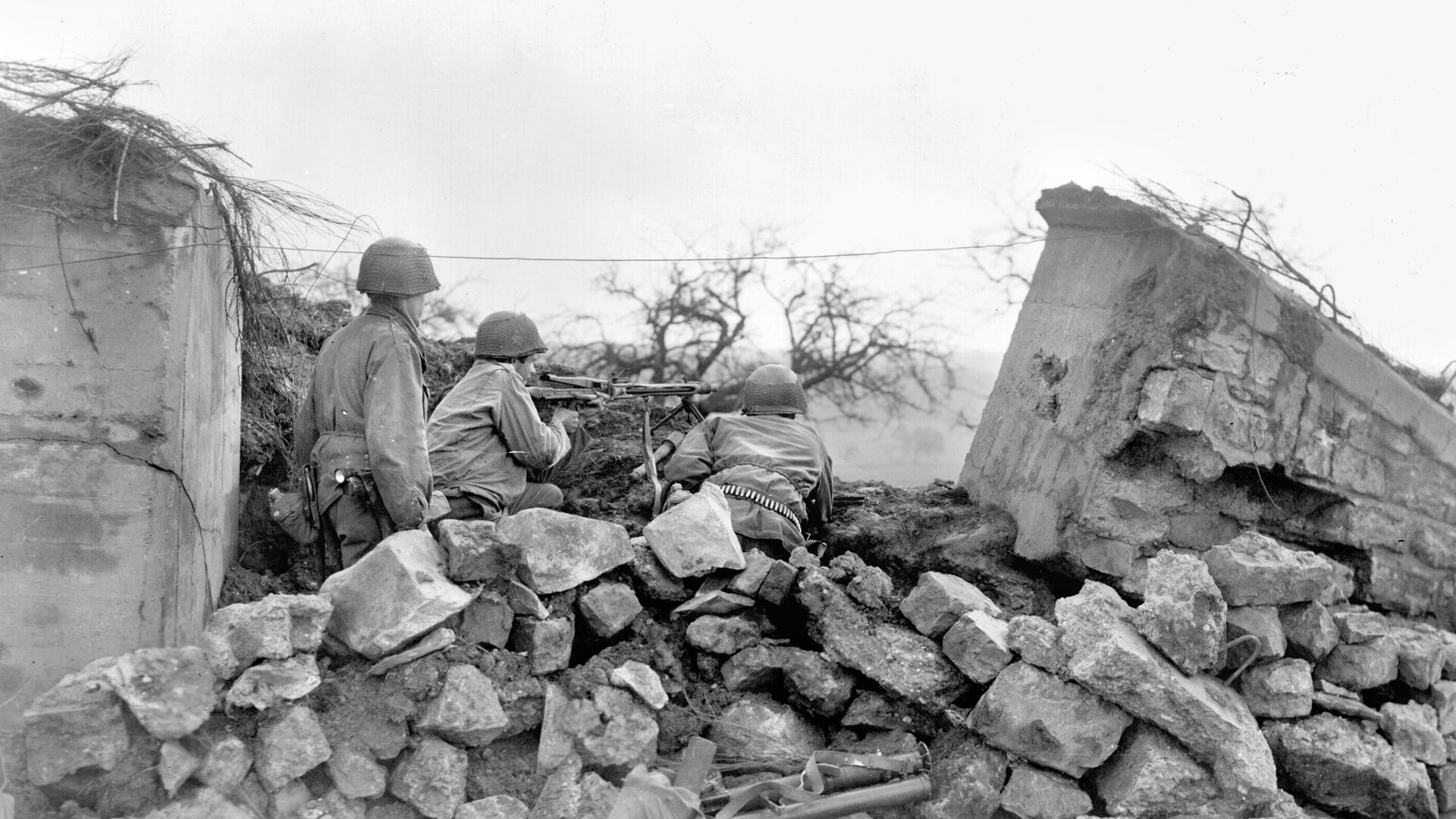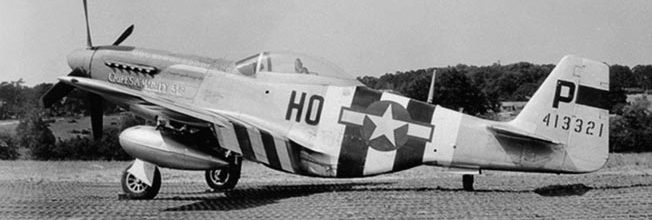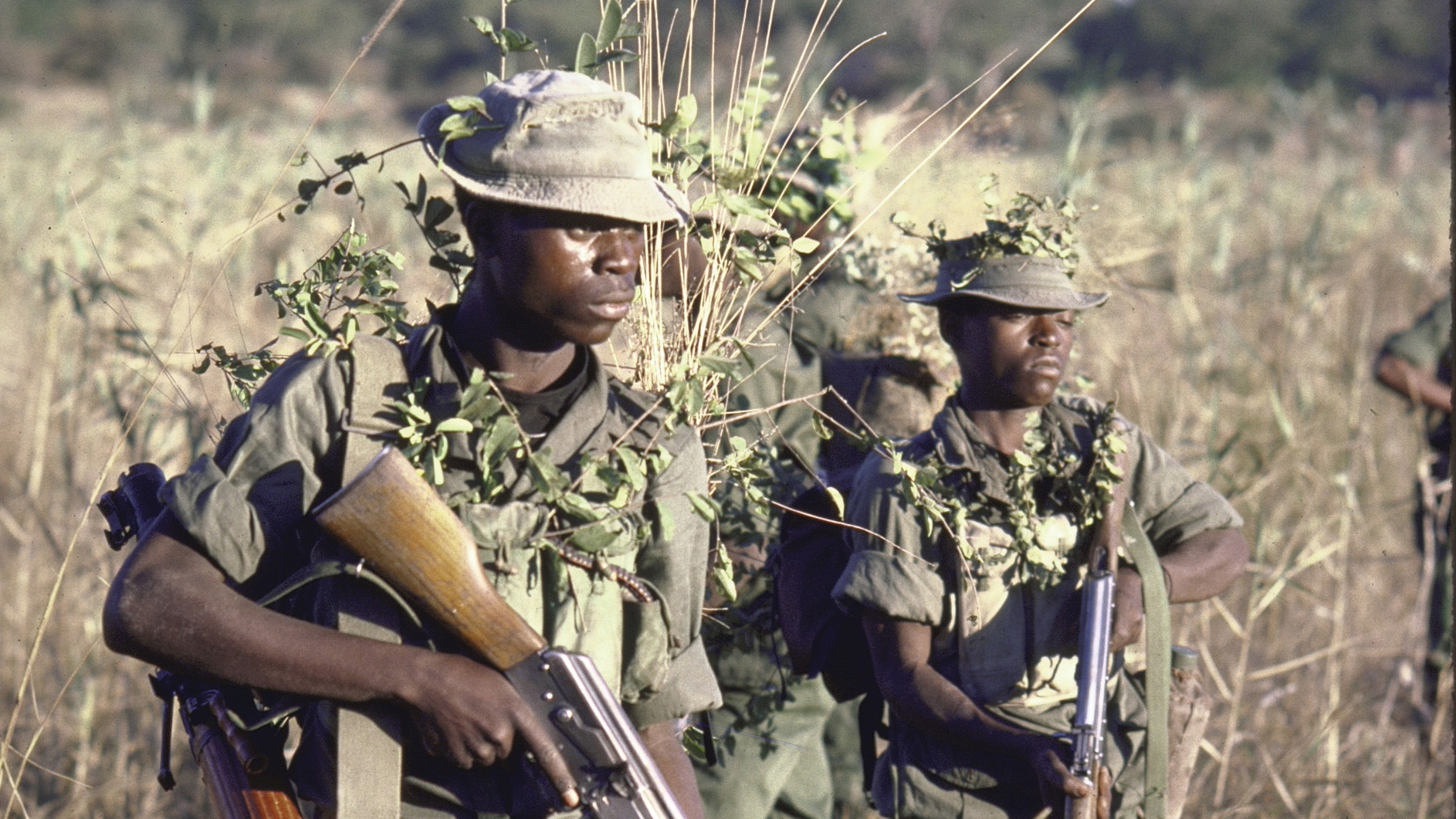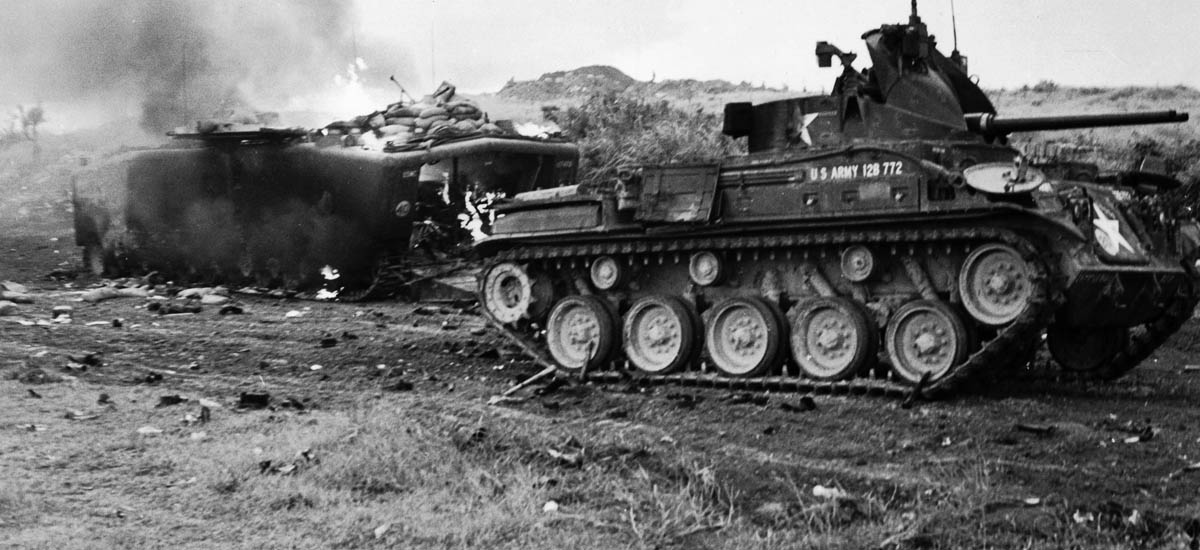By Ludwig Heinrich Dyck
On December 12, 1466, a small group of horsemen led by an old man with a long white beard rode up to the gates of Rome. By the looks of his attire, he was a common soldier, although he bore his tall, gaunt frame as proudly as any great king. A fire still blazed in his eyes, and his gnarled muscles retained most of their legendary strength. He was not as old as he appeared, for a life of constant battle had aged him prematurely. Despite his humble entrance, meant to accentuate his plight, he was recognized. Soon his name was on everyone’s lips. Excited crowds gathered to behold the renowned Albanian hero and champion of Christendom “Skanderbeg,” who had bravely held back the relentless Turkish advance toward the west.
More than 60 years earlier, around 1405, in the mountainous Dibra region of eastern Albania, Voisana, wife of Gjon Kastrioti, gave birth to Gjergi, the future Skanderbeg. Gjergi was the youngest of four brothers among nine children. Their grandfather Pal had come down from the village of Kastrat in northeastern Albania and made himself a chief in the Dibra. Gjergi was born at a time when the land was fractured by shifting alliances between Albanian nobles, Venetian coastal colonies, and Ottoman Turks on the Macedonian border. By his wit and sword, as well as marriage alliances through his daughters, Gjergi’s father expanded his realm. He lorded over much of central Albania by 1394.
Sultan Bayezid I invaded Albania that year, subduing the lands and establishing Ottoman presence in the south. Gjon got his chance to rebuild his power when the Ottoman Empire fell into disarray after its defeat at Ankara by the Timurids in 1402. Gjon even took possession of Kruja, the bastion of central Albania, but in 1415 the Ottomans returned and reestablished authority. Gjon was forced to hand over nine-year-old Gjergi as a hostage. Gjergi appears to have been returned to his parents after only a year, not entering the sultan’s service until he was 18 years old in 1423. One of Gjergi brothers, probably Stanisha the eldest, was more fully integrated into the sultan’s court. He married a Muslim woman and had a son named Hamza.
After three years of military training at Edrine, Gjergi was likely granted a timar (land grant) in return for military service near his father’s domains. Gjergi’s father was soon again at odds with the sultan, as he refused to aid the Ottomans against Venetian Thessaloniki. The sultan sent a punitive expedition and in 1430 seized both Kruja and Svetigrad, the key fortress on Albania’s Macedonian frontier. The Turks “pillaged and destroyed the lands of Gjon Kastriota, the men were put to the sword, while the women were made slaves,” wrote Ottoman chronicler Oruc. Gjon was assassinated on the sultan’s secret orders in 1437. Gjergi became aware of the culprit behind his father’s death but for now remained loyal to the sultan.
In 1438, Gjergi was rewarded by being made subashi(town commander) of Kruja. Yet with his typical stern eyes Gjergi would have looked upon the Turkish standards on Kruja’s ramparts with disapproval. All along he had dreamed of a free and Christian Albania. He was only biding his time to make it so. Without centralized command and powerful allies, Gjergi had seen how Albanian resistance was doomed. To build a base of future alliances, Gjergi covertly sent messengers to Naples, Venice, Ragusa, and Hungary. This he continued to do even as he was promoted tosanjakbey(district commander) of Dibra in 1440.
By 1443 Gjergi had served Murad for 15 years and had gained the Turkish name of Iskander, after Alexander the Great, who was revered by Christians and Muslims alike. Hence Gjergi become known as Scenderbeij to the Albanians, which was a combination of his Turkish name and the rank of bey. In early November, Skanderbeg and his 300 Albanian cavalry were with the sultan’s army when it engaged the Hungarians and Poles at Nis.
Ladislav, the brave young king of Hungary and Poland, commanded the army in person but it was the renowned Turkish fighter Janos Hunyadi, Lord of Transylvania, who led it to victory. In the chaotic aftermath of the Turkish defeat, Skanderbeg forced the sultan’s secretary to write a note handing over command of Kruja. With Skanderbeg was his nephew Hamza, who upon their arrival at Kruja delivered the secretary’s note to Governor Hasan Bey. Hamza lacked his uncle’s physical stature but not his charisma and spirit, and so he convinced Hasan of the legitimacy of the note. Skanderbeg gave a stirring speech in the cathedral on November 28. He renounced the sultan and Islam and championed Christian freedom. The Kastrioti flag of the two-headed black eagle on red was once more hoisted over Kruja.
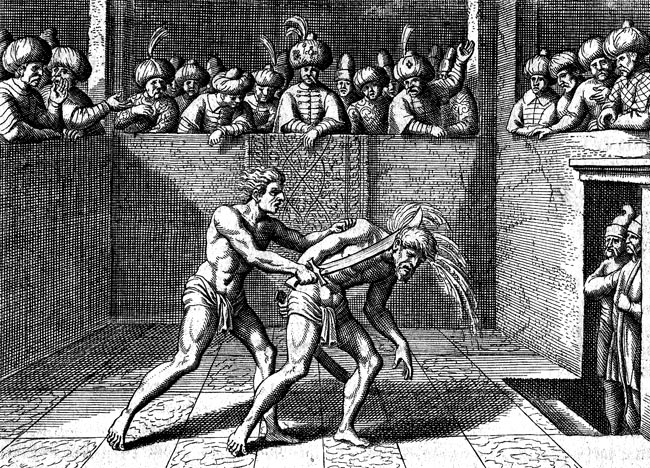
An emboldened Skanderbeg captured the Turkish strongholds from east of Kruja to the Black Drin. Like their duped comrades at Kruja, the garrisons were given the choice of baptism or execution. Skanderbeg pushed himself hard, sleeping as little as two hours a night and sustaining himself through his healthy appetite for food and wine. He was joined by Moses Golemi of Dibra, who forced Svetigrad into surrender.
Skanderbeg prepared for an expected Turkish spring counteroffensive during the winter of 1443-1444. On March 2, 1444, nine leading families joined Skanderbeg at the cathedral of the Venetian coastal town of Lezhe. Skanderbeg’s spirit of patriotism struck at the hearts of the assembled lords. They elected him captain general of the League of Albanian Princes. Thereafter, thousands of soldier-peasants showed up to fight under Skanderbeg, for his manner of dressing and eating plainly appealed to the common man.
In June, Skanderbeg awaited the Turks in the northern Dibra, where the upland plain of Torvioll descended to the Black Drin. Just before sunset, Ali Pasha encamped his 24,000-strong Turkish army not far from the Albanian camp. Fires in the Ottoman camp illuminated faces full of mirth and confidence. In contrast, Skanderbeg’s camp was dark and silent to keep the Turks guessing about his own army. In the morning Skanderbeg deployed his horsemen and archers in a crescent with infantry in the rear. Amused at the paltry numbers of the Albanians, Ali opened the battle with cavalry skirmishes. The Turkish infantry had just marched forth to join the battle when 3,000 Albanian horsemen suddenly charged out of the woods to the rear. The Turks panicked and were cut down in great numbers. Ali Pasha was among the few that escaped.
Gaining extra horses and immense booty from the Turkish baggage train, the Albanians broke out in song and boasted that the Turkish cow could not get away from the Albanian bull. More refined congratulations for Skanderbeg came from Poland, Hungary, Venice, Burgundy, and Pope Eugenius IV. Edged on by the Pope, King Ladislav called for Skanderbeg to join forces and together drive the Turks out of the Balkans. As it was, Skanderbeg was delayed from joining Ladislav before the king’s death and disastrous defeat at Varna on November 10.
Sultan Murad offered to forgive his rogue vassal Skanderbeg and even recognize his claim to Kruja, but in return demanded other Albanian towns. When told that his offer had been spurned, Murad sneered that Skanderbeg must wish for a terrible death. In 1445 Firuz Pasha set out from Skopje, the capital of Macedonia, with upward of 15,000 picked horsemen to deal with Skanderbeg. Instead, it was Firuz’s cavalry that was set upon by Skanderbeg’s light infantry in a wooded mountain pass not far from Prizren. Despite the disadvantageous terrain, the Turkish horsemen resisted bitterly until being forced to retreat. On September 27, 1446, Skanderbeg fell upon the poorly guarded Turkish camp of Mustafa Pasha at Otonete. Fierce fighting raged through the trenches until nearly all the Turks were slaughtered; however, Mustafa escaped and was thereafter ordered on the defensive.
A new theater of war opened up for Skanderbeg over the stronghold of Danje in northwestern Albania. When Danje’s heirless Lord Lek Zaharia was killed, his mother handed Danje over to the Venetians rather than lose it to his slayer, Lek Dukagjini. Based on a previous agreement with his friend Zaharia, Skanderbeg felt that he should inherit Danje.
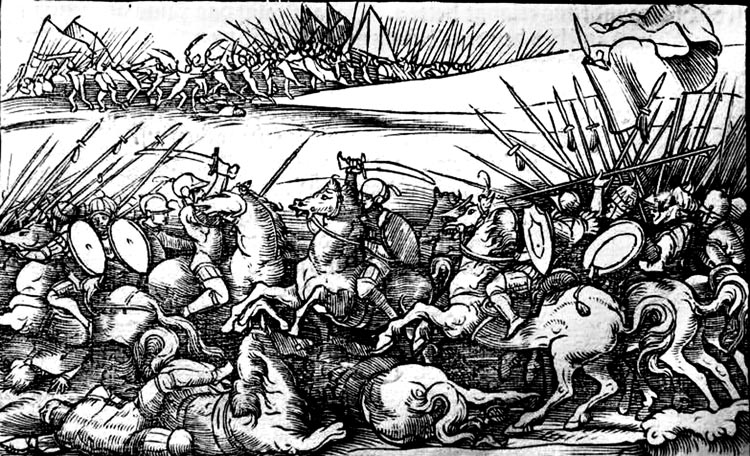
When Skanderbeg besieged Danje, the Venetians had the audacity to ask Murad to punish his wayward vassal and even offered a reward for Skanderbeg’s assassination. Their scheming came to naught, though, and on July 23, 1448, the opposing armies met on a plain flanked by the Drin southeast of Venetian Scodra. This time Skanderbeg was also fighting his countrymen; two-thirds of the 15,000-strong Venetian army was Albanian, led by lords whose bond with Venice overrode their allegiance to Skanderbeg.
Skanderbeg reminded his men that they were fighting fellow Christians and that they should thus act more lenient. Venetian pikemen in corslet armor advanced into the furious fire of Albanian archers. On the wings, Skanderbeg’s cavalry gained the upper edge. The bodyguard of Daniel Jurich of Sebenca, governor of Scodra, sustained the Venetian defense but nearly collapsed when Skanderbeg broke through with a cavalry charge. Jurich’s Albanian allies came to his rescue but defeat could not be avoided.
Skanderbeg was thus able to continue the siege of Danje, but things turned sour when Hamza attacked Venetian allied Drivasta. Rebuffed, Hamza raided the surrounding population. Although greatly angered by the needless loss of Albanian blood, Skanderbeg had more pressing matters on his mind for a courier had brough news of a renewed Turkish invasion.
Leading 15,000 men from Ohrida was Mustafa, eager to wipe out the shame of his earlier defeat. Mustafa advanced to within six miles of Kruja when he was intercepted by Skanderbeg’s army. During a prebattle duel, the cavalier Pal Manasi beheaded the Turkish champion Kragoz. The Turks were left demoralized, and even Mustafa’s personal bravery could not rekindle resistance. Mustafa was taken prisoner and ended up being ransomed by Murad for 25,000 ducats; however, in Skanderbeg’s absence the Venetians had made gains. Furious over the matter, Skanderbeg hurried back to Venetian territory, putting to the sword any who did not swear fealty.
Nevertheless, Skanderbeg agreed to a peace with Venice on October 4, 1448, and even relinquished his claim on Danje. In return, Skanderbeg was to be paid 1,400 ducats a year and gain exemption from salt duty. Skanderbeg could ill afford to continue a two-fronted war since Hunyadi needed his help and was already moving against the Turks. For a second time, though, Skanderbeg was too late to help Hunyadi avert defeat. That defeat came at Kosovo-Polje on October 18-19, 1448.
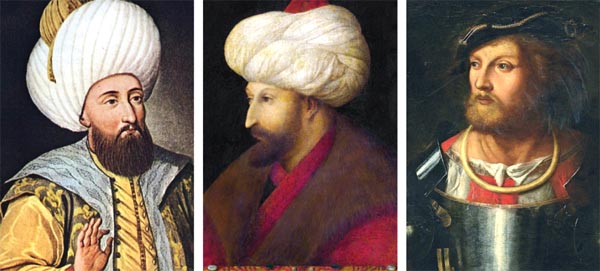
In the spring of 1449 Sultan Murad personally led his gargantuan army against Skanderbeg. Fear took hold of Albania and crowded churches reverberated with prayers. To uplift morale, priests preached of celestial signs assuring victory. Skanderbeg had a vision of St. George, the patron saint of Albania, who handed him a flaming sword to strike down the unbelievers.
Preceding Murad’s slow-moving main army with its siege engines and baggage train was a separate, powerful detachment of light cavalry. This advance force set up camp below Murad’s objective of Svetigrad. Shortly afterward the Turks espied a party of peasants leading horses laden with supplies for Svetigrad. Mounting their horses, a number of Turks set off after the peasants only to discover that the peasants were Moses Golemi and 30 of his best men in disguise. The Turks were beaten in a furious melee, after which 4,000 Turkish cavalry were sent to hunt down Moses’s party. They suffered an even greater defeat when Skanderbeg’s infantry attacked from thickets and ravines.
Murad arrived on May 14 at Svetigrad with 150,000 soldiers, servants, and camp followers. From a forest of hoisted standards, a clamor of shouting, pounding drums, and blaring trumpets carried up the craggy hillside to Svetigrad’s walls. Murad sent envoys, but neither money nor privileges could buy off fortress commander Peter Perlat.
Three days of bombardment opened a breach in the walls, but the approach was steep and missiles raked the Turks off the siege ladders. The Turks nevertheless kept climbing until they passed the outer trenches. At that point, Turkish pickets spotted an immense cloud of dust. Led by Skanderbeg, 5,000 Albanian cavalry thundered upon the Turkish camp. The Albanian horsemen gave a mighty shout that carried all the way up the mountain, lifting the hearts of the defenders.
Murad’s royal cavalry galloped forth to engage the attackers, but the Albanians maintained the upper hand. Skanderbeg personally slayed five of the enemy. When the Turks on the hillside broke off the assault on the walls to join the fighting below, Skanderbeg retreated into the wilds. With Svetigrad’s lofty heights frustrating assaults, Murad settled down for a lengthy siege.
Late at night on June 22, the Turks heard the neighing of horses and clatter of armor just before Skanderbeg’s cavalry bolted out of the dark. Several thousand Albanian horsemen tore through the outer camp, spreading confusion, overthrowing tents, setting fires, and dealing death. When the Turks counterattacked with a solid phalanx of spears and pikes, Skanderbeg signaled the retreat. The Albanians took the heads of decapitated Turks with them.
Murad flew into a rage. He renewed the assaults and granted Firuz Pasha his wish to hunt down Skanderbeg. Unfortunately for Firuz, he was given second-rate troops. There was a high rate of desertion and, not surprisingly, the remainder were destroyed by Skanderbeg. When Firuz challenged him to combat, Skanderbeg drove his lance through Firuz’s helmet and head.
Nevertheless, Svetigrad surrendered after three months of siege. Murad did this either because the water supplies ran low or because a traitor had poisoned the well with a dead dog. Murad’s son Mehmet wanted to massacre the survivors, but Murad let them depart unmolested. Wearing girdles around their necks as symbolic halters, the vanquished garrison prostrated itself before Skanderbeg. Knowing that Perlat and his men had done all they could, Skanderbeg praised them for their bravery
Back at Kruja, Skanderbeg was beset by Albanian nobility urging him to find a wife who would give him an heir. Not inclinded to submit to the yoke of marriage, Skanderbeg maintained that it was inappropriate to think of courting while Svetigrad remained under tyranny. Murad rebuilt Svetigrad’s walls and left behind a strong janissary garrison, then left for Edrine. Skanderbeg, for his part, had been reinforced by Italian and German arquebusiers and crossbowmen, Serbian swordsmen, and French artillery. Even so, he was unable to retake Svetigrad because he was thwarted by the tenaciously defended natural defenses. When the weather turned foul, the janissaries ridiculed the soaked Albanian cavalry riding in the mud below.
In October Skanderbeg broke off the fruitless siege, having received news of an approaching Turkish relief force. The Turkish onslaught was sure to hit Kruja the following year. Riding through heavy snowfall and blizzards, Skanderbeg and Moses scouted attack routes and hill trails. Kruja’s defenses were strengthened, grain was stockpiled, and Count Vrana’s garrison reinforced with the European volunteers and mercenaries.
Sultan Murad and his massive army set forth from Edrine on April 5, 1450. Skanderbeg could do nothing to stop the Turkish army’s slow but inexorable arrival below Kruja. From nearby Mount Tumenishta, Skanderbeg watched the Turks set up a sea of tents, pavilions, flags, and banners. Murad’s heralds offered 200,000 aspers (silver coins) for Vrana and safe conduct and religious freedom to its citizens, if Kruja surrendered. When his offer was refused, Murad let his cannons do the talking.
After five days of siege the Turks launched their first assault, but it had barely begun when shouts and commotion erupted from the rear. Skanderbeg’s cavalry was tearing through the periphery of the Turkish camp. Crown Prince Mehmet led 4,000 Turkish horsemen in a counterattack, whereupon Skanderbeg retreated because he needed to conserve his paltry forces. The assault on Kruja then redoubled in fury, but Vrana rushed in fresh reinforcements and the walls held.
While cannon fire chipped away at the walls, Mehmet lay in wait for Skanderbeg’s next raid. Instead, he was diverted by a feint attack led by Moses. Skanderbeg then attacked where least expected. He wreaked havoc before retreating. Drums and trumpets heralded another assault on Kruja, and the Turks stormed forth under their own artillery fire, but again the defenses held. Next miners dug beneath the fortress but rock barred their way. At one point, Murad espied Skanderbeg on the cliff overlooking Kruja. Murad laughed sardonically. Perhaps it would be better to leave the wild, ferocious lion alone, he thought.
After a third failed assault, Murad tried to buy off Skanderbeg by offering an annual stipend of 10,000 crowns. Skanderbeg retorted he would decline even if Murad offered half the Ottoman Empire. With the approach of winter, Murad was forced to concede failure and on October 26 marched back to Edrine. Stricken by illness, Murad passed away in January 1451.
Ecstatic crowds greeted Skanderbeg at Kruja; bonfires were lit and songs were sung. Vrana was awarded gold and silver, two ornamented coats of armor, and four manors. Praise for Skanderbeg arrived from Hungary, Burgundy, Naples, and the Papacy. Pope Nicholas V called Skanderbeg “the most redoubtable athlete and fearless warrior of the true faith,” according to 19th-century German historian Friedrich Kayser. Alfonso of Aragon, King of Naples, sent wheat, barley, and workmen to Kruja. Early in 1451 Skanderbeg acknowledged Alfonso as his sovereign. This suited Alfonso’s empire-building schemes along the Adriatic Sea and ensured future supplies and troops for Skanderbeg. As Alfonso’s vassal, Skanderbeg held the title of Captain General of Aragon.
Skanderbeg wed in May 1451. His bride was 21-year-old Andronica, the daughter of Gjergj Arianiti and Maria Muzaka. The wedding festivities were held at Kanina overlooking Vlora Bay. People flocked to see the newlyweds as they toured Albania. Skanderbeg took leave of Andronica at Petrela. There were few passes into the idyllic pastoral valley, and given the dangerous times, Skanderbeg placed garrisons in all of them. Skanderbeg went to oversee the construction of Modrica, a new castle on the frontier, when he received envoys from the new sultan.
Sultan Mehmet II had grander dreams than his pragmatic father. Mehmet intended to extend the Ottoman Empire until it rivaled the Roman Empire of old. But first rebellious emirates in Anatolia required his personal intervention. Treaties kept Serbia, Hungary, and Venice in check but not Skanderbeg, who refused to bend to the sultan’s will.
Cannon fire boomed along the lower Dibra as Modrica signalled the approach of an Ottoman army. Turkish commander Amese led 12,000 cavalry up a long and strenuous climb. When the exhausted men and beasts emerged into broken terrain, Skanderbeg sprang his ambush. From behind boulders and rocky crags, Albanian infantry struck at the Turkish column. The Turks threw down their lances and scimitars rasped out of scabbards but their horses had poor footing. The Albanians killed first the steeds and then the riders. It was the first in a new string of victories for Skanderbeg.
In March 1452, Skanderbeg penetrated Turkish territory to near Skopje. During a night battle, Skanderbeg ran his lance through the Turkish commander. Then on April 22, 1453, in the Pollog valley, Skanderbeg launched a cavalry attack during a storm, throwing the Turkish camp into chaos.
The losses that Mehmet incurred at Skanderbeg’s hands were more than made up for with his capture of Constantinople in May 1453. The fall of the last bastion of the Roman Empire to the Turks sent a wave of fear throughout Christendom. Skanderbeg visited Naples and Rome to strengthen the war effort, but it was not until the spring of 1455 that a joint Christian offensive got underway. This time, though, everything was different. Skanderbeg wanted to retake Svetigrad, but his allies decided to recapture Berat, the key fortress of the south. Overall command was entrusted not to Skanderbeg, but to Musachi Thopia, whose family traditionally laid claim to Berat. Moses was not at Skanderbeg’s side either, having remained on the Dibra frontier. Reinforced with 2,000 Neapolitan arquebusiers, crossbowmen, and artillerymen, the 14,000-strong Albanian army laid siege to Berat. Three days of bombardment blasted a breach in the walls. Skanderbeg was ready for the assault when Thopia accepted the unusual Turkish surrender terms; the garrison would hand over the town, but only after 11 days.
Skanderbeg encamped on a mountain next to Berat with 4,000 men. The rest of Thopia’s army was already in victory celebrations when a huge Turkish relief force appeared. With an purported 40,000 cavalry, Izak Bey annihilated Thopia’s Albanians, killing him in the process and wiping out nearly all the Neapolitans as well. Witnessing the disaster, Skanderbeg’s upper lip split as it often did when he grimaced in anger. His cavalry stormed down the mountain and into the Turks, pursuing Thopia’s Albanians. Two Turks charged their horses at Skanderbeg, who met them with his famous scimitar, forged in Damascus. Skanderbeg slashed one of the Turks across the eye, nearly cleaving the head in two. The other Turk flung himself from his saddle and grappled Skanderbeg, intend on pulling him off his horse. Skanderbeg freed himself by slicing his scimitar across the Turk’s neck. The battle had been lost, though, and Skanderbeg had no other choice but to withdraw. The Turks vented their anger by breaking the limbs of the wounded Christians with maces. Having broken the siege of Berat, Izak Bey returned to Edrine.
The tear-stained women of Kruja implored Skanderbeg to tell them of missing husbands and sons. Those who had died in battle were lucky compared to those taken prisoner by the Turks. Impaled and decapitated, their heads were stuffed with straw and used as footballs by the street urchins of Edrine. On top of it all, Skanderbeg received the shocking news that Moses had defected to the sultan. Even before the Berat campaign, the sultan’s agents had corrupted Moses’s mind with gifts and flattery. Astonishingly, Skanderbeg forgave Moses, admitting that the disaster at Berat could have made the most loyal falter. Indeed, several other Albanian lords followed Moses’s example. Modrica, too, was lost through treachery.
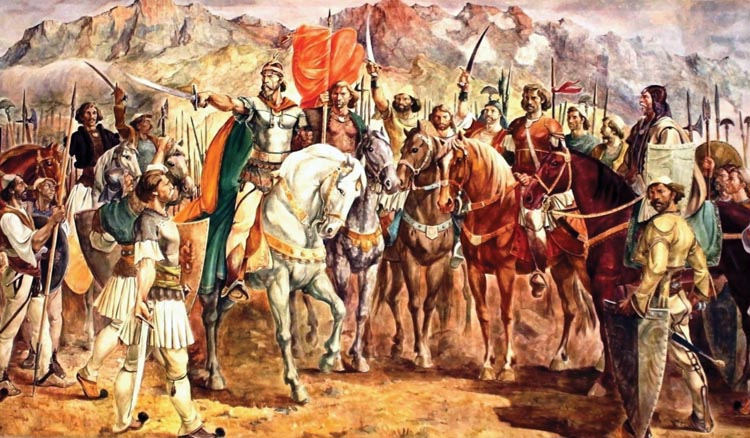
When the next Turkish army moved against Albania in late February 1456, it was commanded by Moses. On the plains of Oronichea, Moses spurred his horse toward Skanderbeg’s army and challenged him to personal combat. Skanderbeg hesitated, not wishing to spill the blood of his former friend. When Moses’s insults became too much, Skanderbeg walked out, whereupon Moses galloped back to his own lines. Six thousand Albanian cavalry smashed into the Turks, shattering their formations. Skanderbeg was nearly skewered by a lance, but his Albanians never lost their initial advantage. Moses was lucky to escape with a third of his army. Inflamed by the memory of Berat, the Albanians took no prisoners.
Defamed at the sultan’s court, Moses stole away on a horse to return to Dibra. Wearing a rope in the form of a halter, a weeping Moses abased himself in front of Skanderbeg. Skanderbeg took his old friend’s hand, pardoned him, and returned his lands and titles. Taking some well-deserved rest, Skanderbeg spent time with his wife on the coast and stayed with her at Kruja for most of the winter. Andronica was pregnant and during the year gave birth to their only child, Gjon Castrioti II.
The happy news of Moses’s return and Skanderbeg having an heir was countered by another defection. Tired of living in his uncle’s shadow, Hamza aspired to be ruler of Albania and looked to the Sultan to make him so. In the late summer of 1457 Hamza advanced on Albania with Izak Bey in co-command of 50,000 men. Wary of ambushes, Hamza led the Turkish army down the Mat River valley to the coastal plain. Hamza’s scouts reported that Skanderbeg had pulled back to Lezhe, but actually Skanderbeg had doubled back to Mount Tumenishta. The Turks set up their camp south of the Mat at the Field of White Water. Expecting Skanderbeg to approach from Lezhe, a strong force had been posted on the northern edge of the Turkish camp. The eastern side, where Skanderbeg was watching from the hillside, was left undefended.
On the afternoon of September 2 Skanderbeg and eight men crept up to dozing Turkish sentries and slit their throats. When one of the sentries escaped and ran screaming into the camp, Skanderbeg immediately ordered the attack. Trumpets and drums blared and shouts erupted, as if a mighty host was was about fall upon the Turks, for Skanderbeg had told his small army to make as much noise as possible. To add to the confusion, the Turkish army was attacked on two other sides by Moses and Tanush Thopia. Cavalry thundered back and forth. Devastating Albanian arquebusier fire parted the thick Turkish ranks. When the Turks fell back in disorder, both the arquebusiers and the bowmen drew their swords, slashing the fleeing Turks. Izak escaped due to the speed of his horse, but Hamza was captured.
Mehmet paid a ransom of more than 50,000 crowns for the standard bearer and for 40 distinguished captives. Hamza ended up in Alfonso’s dungeon. An Ottoman envoy offered a 10-year truce, which Skanderbeg was willing to accept in return for Svetigrad and Berat. This Mehmet would not do. Despite the lack of a formal truce, the Turks remained on the defensive through the winter. On December 23 Pope Callixtus III honored Skanderbeg with the titles of Captain General of Kruja, the Holy See, and the Champion of Christ. In the spring of 1458 Skanderbeg found the Turkish lines too well prepared to risk a raid. Impressed by the noble character of the Turkish commander Hamur, Skanderbeg decided to honor the peace.
The year 1458 was marked by other fateful events, though. Kruja’s indomitable defender, Count Vrana, passed away, as did Pope Callixtus and King Alfonso, whose son Ferdinand inherited the throne. The change in rulers occasioned the release of Hamza. Taking pity, Skanderbeg arranged Hamza’s return to Edrine so that he could be with his Muslim family. Hamza was never heard of again, allegedly poisoned by a suspicious Mehmet.
Next, Skanderbeg’s attention was drawn toward Italy where Ferdinand was beset by rebellious nobles. Skanderbeg felt honor bound to help Alfonso’s son and heir, whom he still regarded as his sovereign. Headed by Orsini del Balzo, Duke of Taranto, the rebels backed John of Anjou’s claim to the kingdom. Orsini wrote to Skanderbeg, trying to persuade him that he was backing a lost cause. Replying by the end of October 1460, Skanderbeg reminded Orsini that he had stood up to the Sultan’s army, which was superior to any Italian army.
In the summer of 1461 Skanderbeg left Andronica as regent and departed from Vlora Bay with a fleet carrying 3,000 soldiers. After meeting up with smaller contingents at a welcoming Ragusa, Skanderbeg set sail for Italy. Delayed by mist and storms, the galleys reached Barletta in August. Ferdinand was besieged by the main French army under John of Anjou and soldier of fortune Count Jacob Piccinino. The French withdrew upon sighting Skanderbeg’s fleet. Ferdinand embraced Skanderbeg with tears of joy. Except for Naples, Barletta, and Trani, the entire kingdom had already fallen to John of Anjou.
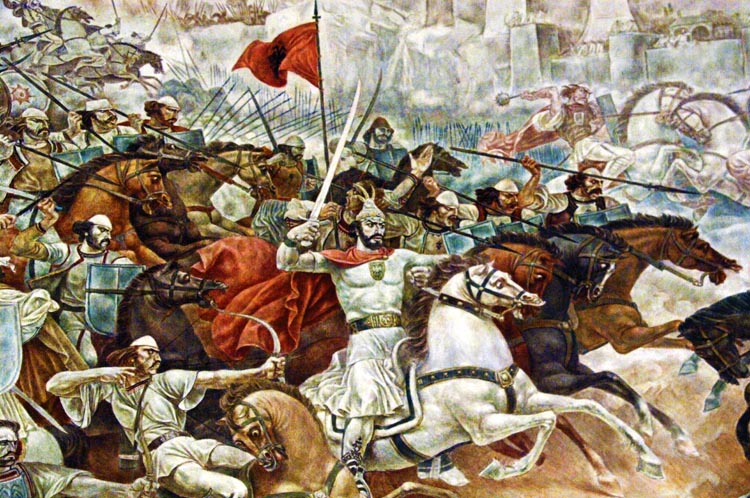
Leaving Skanderbeg to defend Barletta, Ferdinand departed to meet up with allies from Milan. Skanderbeg scouted out the rolling hills and flat plains, using his familiar tactics of attacking from different directions, retreating, and then counterattacking. This caught the French forces, which were used to set-piece battles, off guard. Coming out to parley, the diminutive Piccinino was left speechless by the sight of the tall, white-bearded Skanderbeg, who picked him up and kissed him in greeting. Sizing up Skanderbeg as a naive hill man with no inkling of Machiavellian politics, Piccinino drew out negotiations while planning to ambush and capture him. Forewarned, the infuriated Skanderbeg set forth to destroy Piccinino’s mercenaries; however, they succeeded in slipping away. After carrying out raids, Skanderbeg returned to Albania in February 1462. Skanderbeg’s intervention had enabled Ferdinand to turn the war in his favor and eventually emerge victorious.
From 1462 to 1464 Skanderbeg retained the momentum against the Turks. First to be defeated in 1462 was Sinam, whose army Skanderbeg shattered with a surprise attack along the frontier. Skanderbeg then won a second victory at Lake Ohrid, where he was touched by compassion for the brave Turkish commander Assembeg. When the bloodied Assembeg pleaded for mercy, Skanderbeg treated his wounds and had him escorted to safety. The last battle of 1462 took place close to Skopje, where the cowardice of the Turkish commander, Jusumbeg, caused the rout of his army.
The following year Skanderbeg’s Albanians raided into Turkish territory and stole thousands of horses, cattle, sheep, and goats. In 1464 Skanderbeg defeated a force under Sheremet Bey by Lake Ohrid. Skanderbeg celebrated by feasting on the famed letnica trout endemic to the deep, clear waters. Skanderbeg’s latest offensive was to be part of Pope Pius II’s grand Christian strategy against the Turks, but while on his way with reinforcements Pius perished from illness.
In 1465 another succession of armies marched against Albania. They were commanded by Balaban Pasha, an Albanian. The son of a shepherd who lived on Skanderbeg’s family lands, Balaban had been taken from his parents and brought up as a janissary.
In early April Balaban led his 18,000-man army against Skanderbeg’s 4,000 cavalry and 2,500 infantry, all veterans, at the Battle of Vajkal near Ohrid. Although defeated, Balaban not only evaded capture but turned on his overeager pursuers and captured eight Albanian nobles, including Moses. Taken to Istanbul, Moses and the others were given the choice of conversion or death. Refusing to bow to Islam, they were flayed alive and their bodies thrown to the street dogs. The news of their fate struck Albania with despair, and there was mourning throughout the land.
Next, Balaban tried a night attack on Skanderbeg’s camp near Oranik. Balaban bribed the guards, who were of his kin, but despite the late hour Skanderbeg was inspecting the camp perimeter and sounded the alarm. Again defeated, Balaban escaped with a portion of his army. Seizing the initiative, Skanderbeg attacked Balaban’s camp below Svetigrad.
During the fighting Skanderbeg’s horse was mortally wounded and collapsed over a tree stump. The dying horse pinned Skanderbeg’s shoulder to the ground. Swooning in pain, Skanderbeg watched as the Turks advanced with sabers in hand. Fortunately, his faithful Albanians arrived to the rescue in the nick of time. Overcome with berserk rage, Skanderbeg shrugged off the pain, mounted another horse, and rejoined the fray. The Turks were routed, although Balaban was saved by his swift horse. Skanderbeg’s injury took three months to heal. It probably took that long for the silver-tongued Balban to calm down the furious Mehmet.
Late in the fall, Balaban not only returned with another army of 24,000 men, but also received support from a 16,000-strong second army under Islamic Albanian Jakup Arnauti. Fortunately, Ferdinand had at last sent some troops, boosting Skanderbeg’s forces to 12,000 men. With these he engaged Balaban at the Second Battle of Vajkal. Balaban fought bravely but fled when defeat seemed inevitable, precipitating the collapse of his army. Skanderbeg then defeated Jakup’s army near the village of Tirana, personally slaying Jakup.
Skanderbeg continued to triumph against all odds, but the unceasing war had drained the land of its best young men and denuded the fields of their crops. And Skanderbeg’s greatest challenge was yet to come, for in the spring of 1466 Mehmet led his great army against Albania. The 100,000-strong Ottoman army converged on Kruja in a pincer movement. Mehmet led his contingent to the headwaters of the Shkumbi, following the river as it descended from the mountains into the fertile coastal plain. Turkish raiders burned, raped, and killed as they advanced. They pillaged anything of use before destroying everything else. Throngs of villagers with livestock fled to mountain retreats but the Turks came after them. The Albanian death toll was appalling and 20,000 were dragged into captivity. Skanderbeg struck at smaller Turkish parties but was unable to arrest the Ottoman advance.
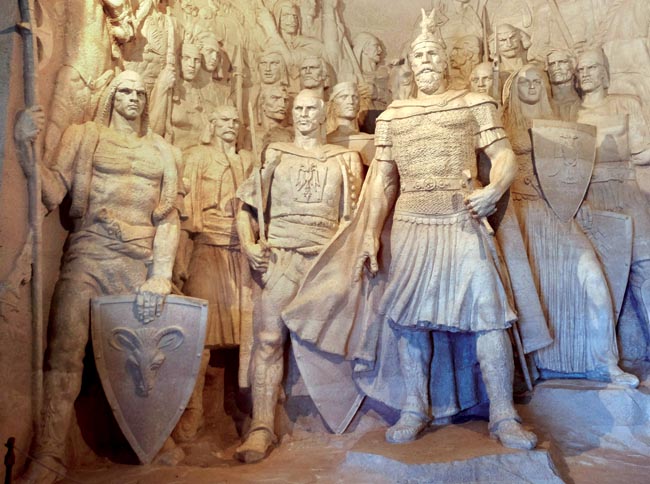
Mehmet intended to starve out Kruja’s garrison and kept them under constant bombardment. When Mehmet returned to Istanbul in the fall, he left behind 30,000 men under Balaban to continue the siege. It was under these dire circumstances that Skanderbeg and his small retinue showed up at Rome on December 12, 1466. At a service in St. Peter’s, Pope Paul rewarded Skanderbeg with a sword of honor and a consecrated helmet. He also gave him 7,500 ducats but could offer no more help. Unfortunately, the Papacy was at war with none other than Ferdinand, whom Skanderbeg petitioned next. Ferdinand warmly welcomed Skanderbeg, but he could only offer 1,500 ducats, supplies, and ammunition.
Returning to Albania, Skanderbeg was pleasantly surprised that the Venetians sent substantial reinforcements; however, Balaban was likewise about to be reinforced by his brother Yonuzi and Yonuzi’s son, Haiden. In a night attack in April 1467, Skanderbeg routed Yonuzi and Haiden’s army and took both of them prisoner. Balaban then tried to win over Kruja’s garrison by persuasion. The garrison commander, Tanush Thopia, answered by leading a sally out of the gate. When Balaban counterattacked, an arquebusier shot caught him in the throat. Galloping back to the Turkish camp, Balaban tumbled off his horse and died. Deprived of their leader, the Turks left the environs of Kruja at night and fought their way out of Albania. As for Yonuzi and Haiden, remembering the cruel end of Moses and the other Albanian leaders, Skanderbeg allegedly cut both prisoners in two with a single blow of his scimitar.
Truly incensed, Mehmet returned in the spring of 1468. In a repeat of the previous year, the Turks looted, burned, raped, and killed. When Mehmet returned to Istanbul in the fall, he again left behind an army to continue the siege of Kruja. Once more, though, Skanderbeg was able to break the siege.
Although Kruja was saved once again, Skanderbeg’s army was reduced to only a few thousand men. He called for another council of Albanian leaders which, alongside representatives from Venice, was to meet in Lezhe. Skanderbeg made it to Lezhe, but the council never happened. Beset by a fever from malaria or from the plague, he grew increasingly ill. From his bedside, Skanderbeg implored his closest friends to continue to defend Christianity.
Skanderbeg’s last moments were spent in the company of his queen and their son. The legendary Albanian freedom fighter died on January 17, 1468. The wailing of women and the ringing of church bells echoed through the hills.
“Woe to Christendom!” Mehmet exclaimed. “She has lost her sword and shield,” wrote Englishman Richard Knolles in his history of the Turks. Indeed, though diverted to the east for 10 years, Mehmet returned in 1477 to starve Kruja into submission. Kruja’s men were massacred and the women and children enslaved. The Turks went on to take possession of the Venetian coastal towns and gained a foothold in Italy. Led in part by Gjon Castrioti II, resistance continued in Albania until 1481 when, after being ousted from Italy, the Turks returned in force. Like many Albanians, Gjon found refuge in the Kingdom of Naples.
Albania remained under Ottoman rule for more than four centuries, not regaining her national freedom until 1912. But the memory of Skanderbeg kept alive an Albanian self-identity that defied foreign occupation. As his battle powers grew in the telling, the historical Skanderbeg became one of legend. He was said to have slain by his own hand upward of 3,000 Turks in battle. What is certain is that Skanderbeg was a man of honor and deep religious faith, of outstanding bravery and limitless energy. He united Albania’s noble families and for 25 years won victory after victory. Skanderbeg’s black, double-headed eagle on red became Albania’s flag. To this day, Skanderbeg remains a national hero.
